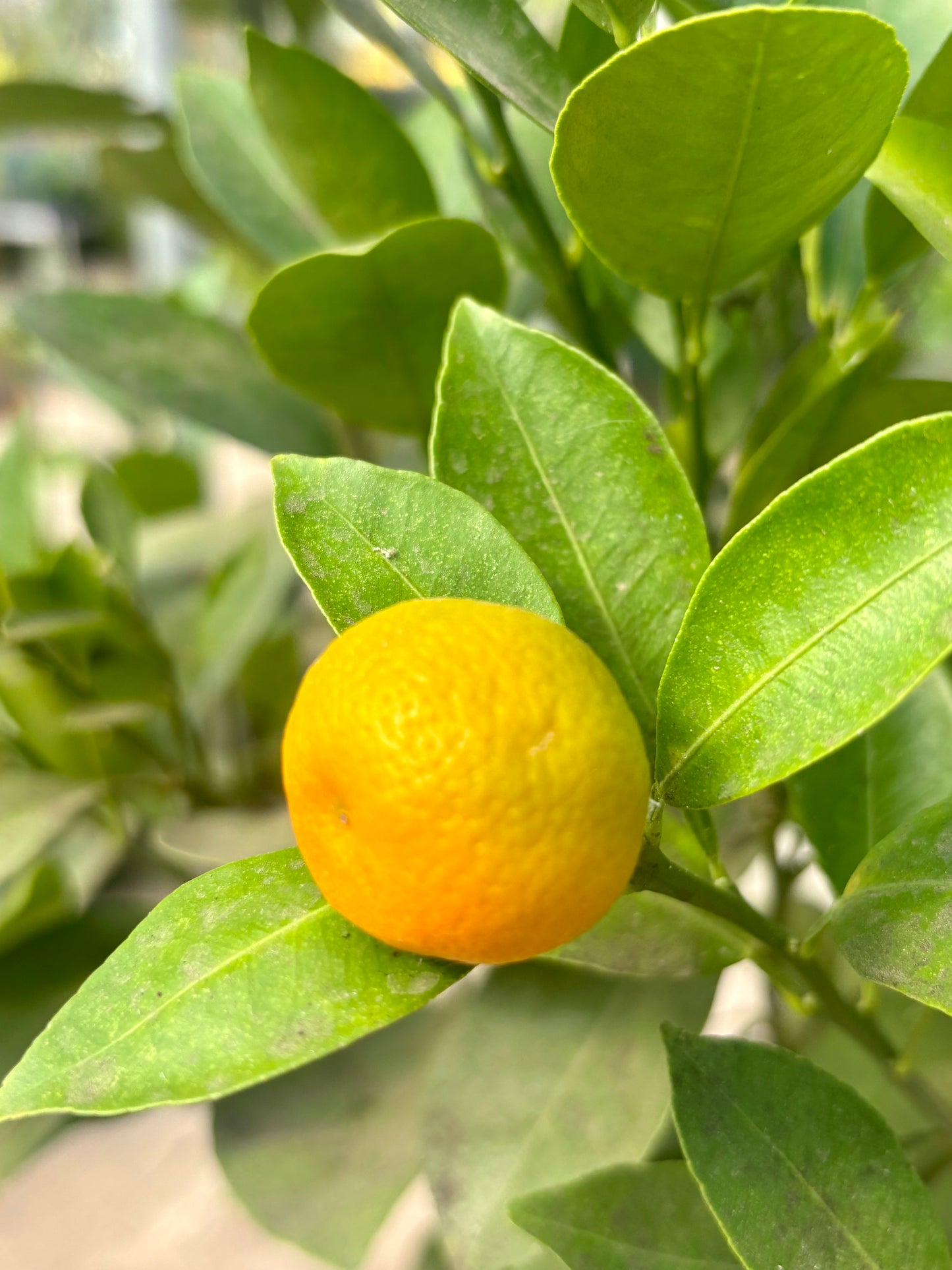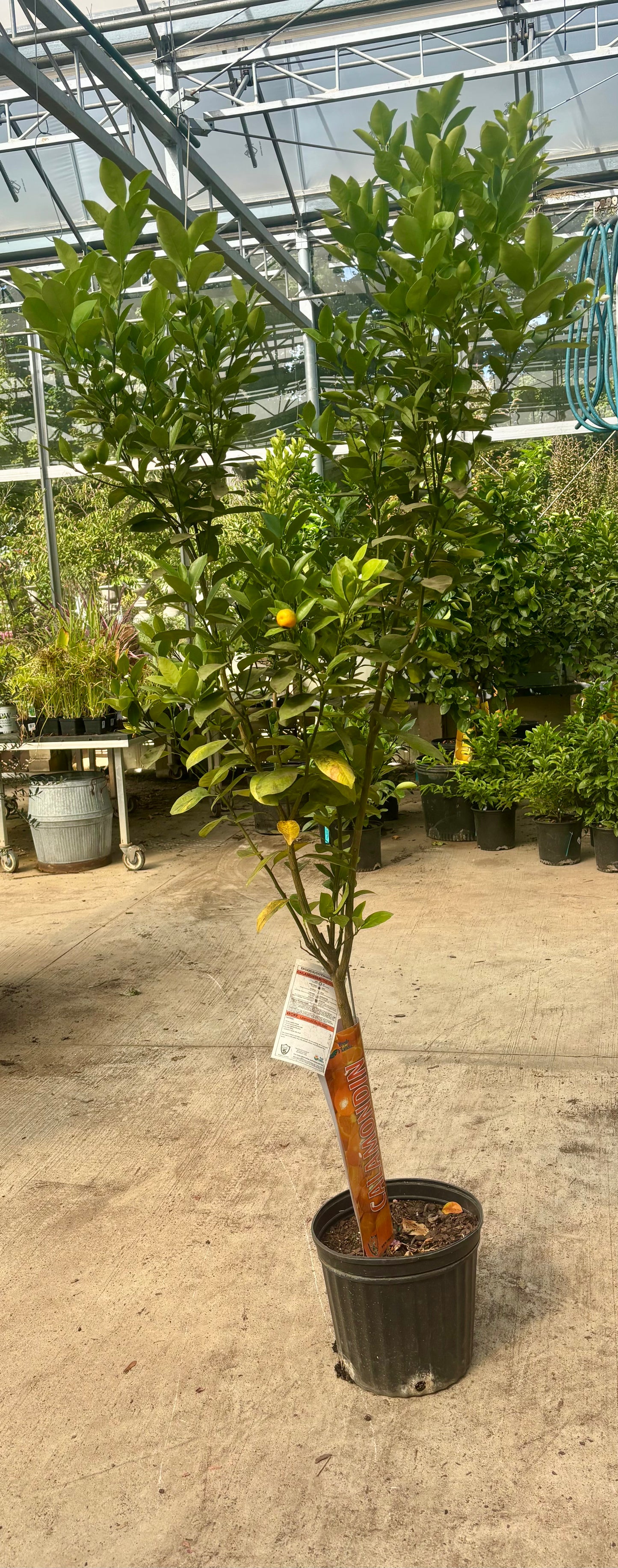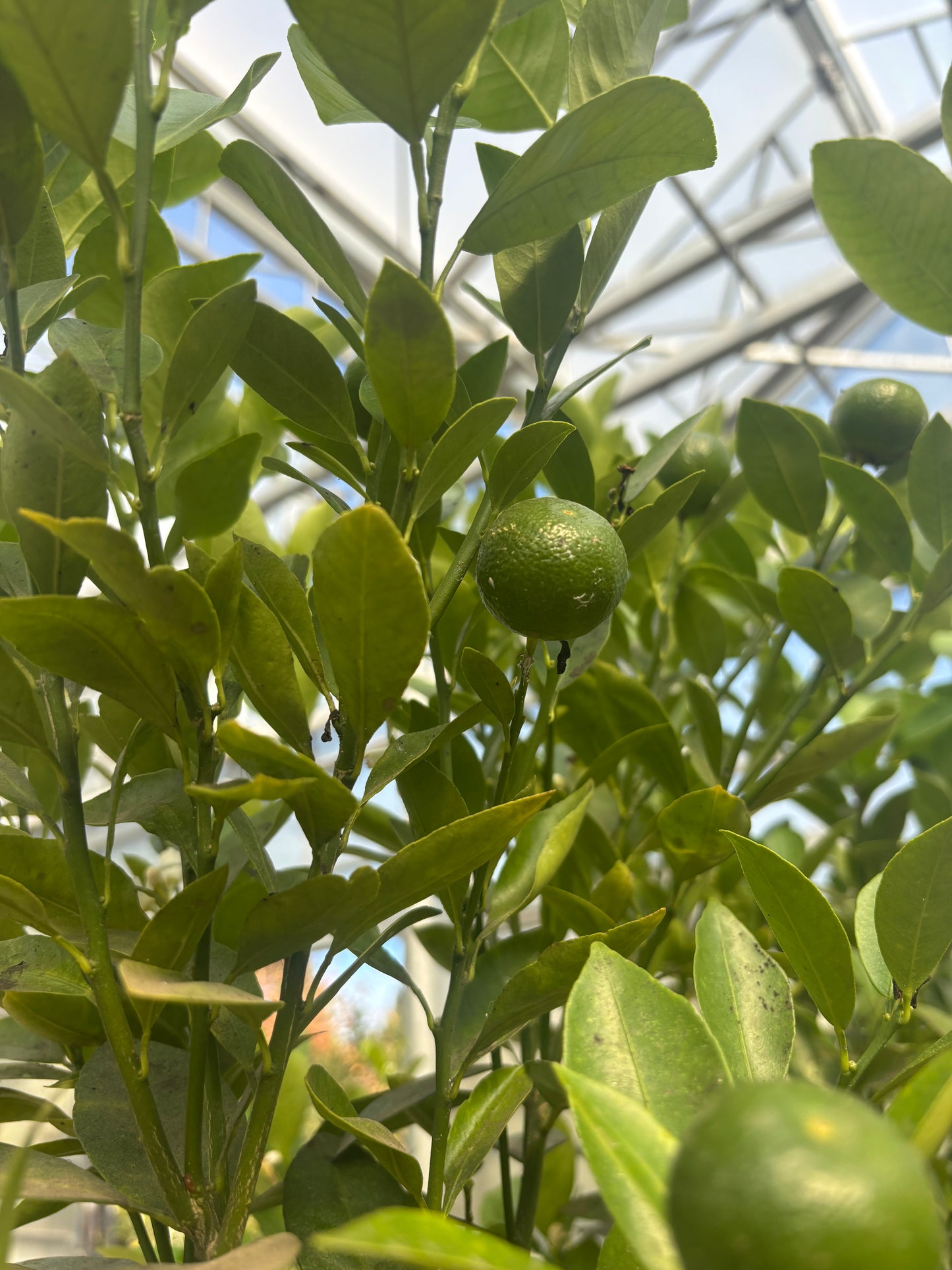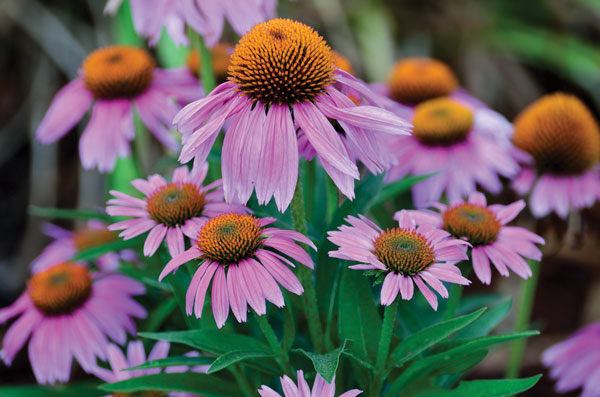Calamonondin Citrus Tree
Calamonondin Citrus Tree
Calamonondin Citrus Tree
Couldn't load pickup availability
A calamondin is a compact citrus tree that produces small, round, bright orange fruits with a thin skin and a tart, acidic pulp similar to a lime or tart lime-like flavor
To care for a calamondin citrus tree in New England, bring it indoors before temperatures consistently drop below 55°F. Provide a bright, south-facing window for at least six hours of daily light. Use well-draining soil and water thoroughly when the top inch of soil is dry, avoiding waterlogged conditions. Fertilize with a citrus-specific fertilizer during spring and summer, and prune dead or diseased branches in late winter or early spring
ndoors: Citrus trees require plenty of light, ideally 8-12 hours daily. A south-facing window is best. During darker winter months, consider supplementing light with a grow light.
Outdoor Winter: Move your calamondin tree indoors when temperatures consistently fall below 55°F (13°C) to protect it from cold. Citrus trees are hardy in USDA Zones 8-10, but New England falls into colder zones that are unsuitable for outdoor overwintering.
Avoid Drafts Keep your tree away from drafts from windows or doors, and away from direct heat sources like radiators.
Soil:
Use a slightly acidic, well-draining potting mix. Adding perlite or coarse sand can improve drainage.
Watering:
Water thoroughly when the top inch of soil begins to dry, but avoid overwatering, which can lead to root rot. Water the entire pot to encourage even root growth.
Fertilizing:
Feed your tree with a citrus-specific liquid fertilizer every four to six weeks during the active growing season (spring and summer).
Pruning: Prune in late winter or early spring to remove dead, diseased, or crossing branches. This helps maintain the tree's shape and encourages healthy growth.
Share




Subscribe to our emails
Subscribe to our mailing list for insider news, product launches, and more.



